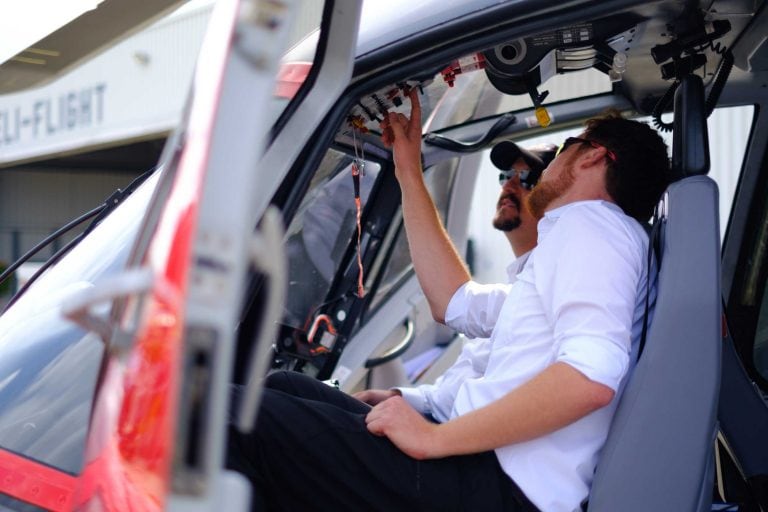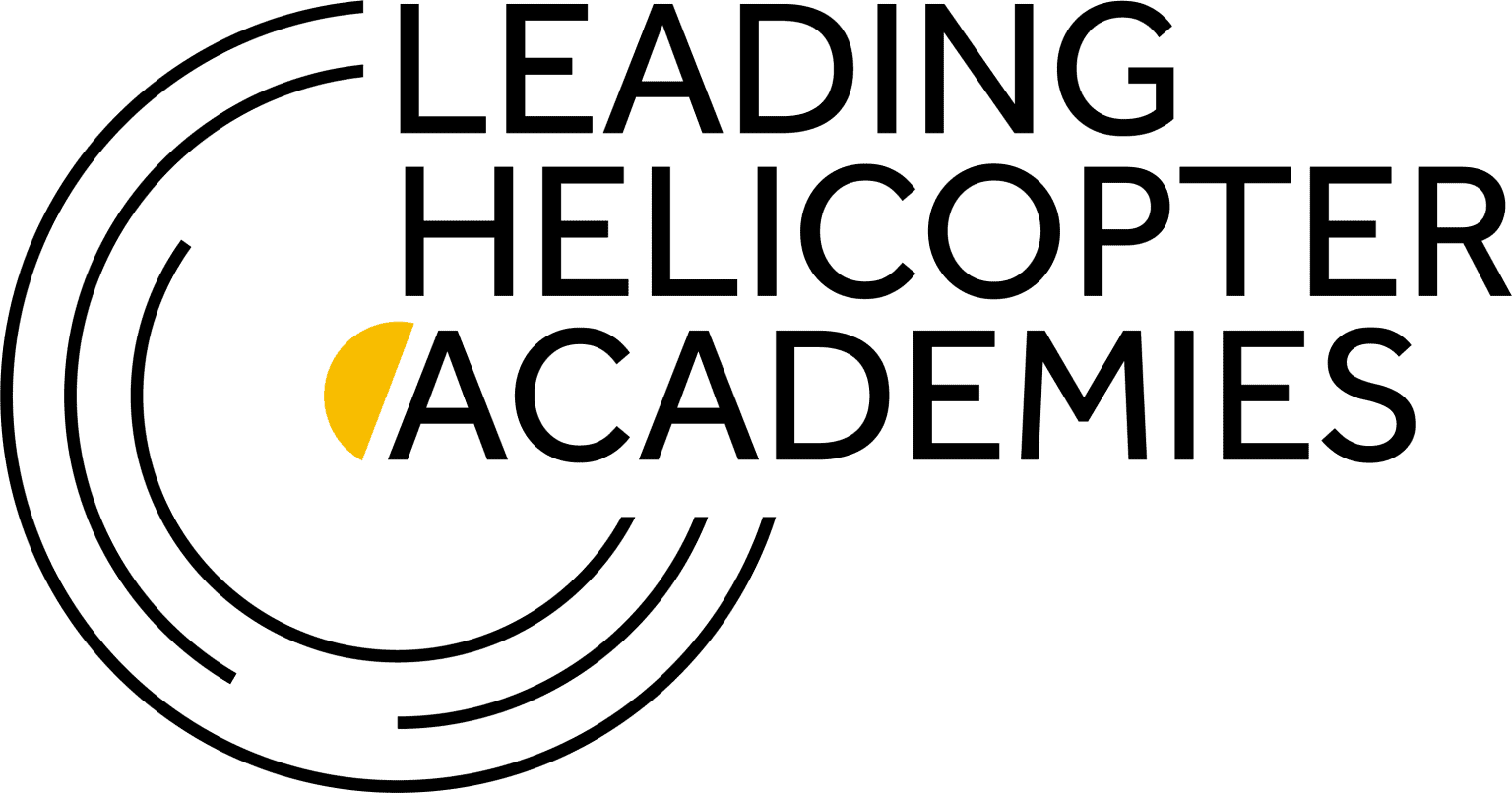Only learning to fly is better
In our Approved Training Organization (ATO) we train you safe, competent, and individually all year round. Our flight instructors have accumulated more than 20,000 flight hours of flight experience. All our instructors do have extensive experience in different kinds of flight operations. We would like to pass on these experiences!
In our ATO you can acquire, refresh, and renew aeroplane and helicopter pilot licenses, type- and class ratings. We will create an individual training plan and adapted to your needs. We are more than happy to accompany you throughout your career with further training, advanced training and your annual check flights. We will create an individual training plan for you that is tailored to your needs. If you wish, we can accompany you throughout your career with advanced training, further training and the annual check flights.
Are you enthusiastic about flying or do you even planning to start a new career? With a trial flight or a trial day you can take the controls yourself and experience the feeling of flying and the work as a pilot.
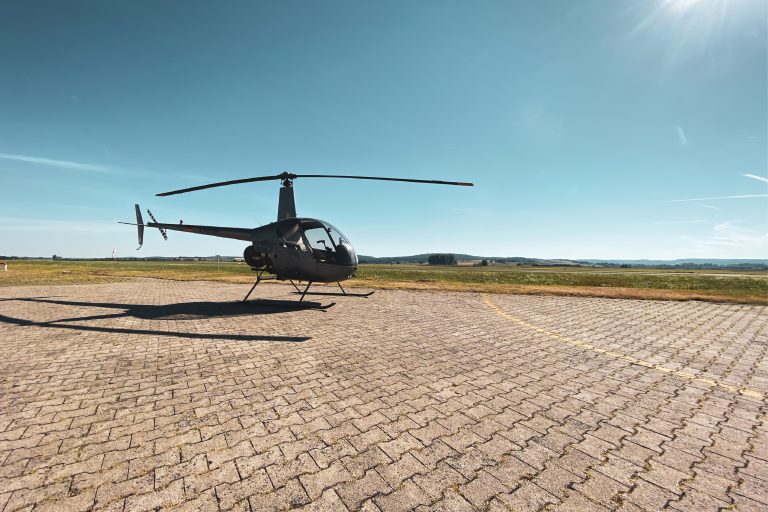
Applicants for a PPL(H) must be at least 17 years old to be granted a license, at least 16 years old at the start of training and before the first solo flight. A valid class 2 medical certificate at the start of training is required.
Furthermore, a reliability check according to §7 and information from the Central Card Index for Traffic Offences must be requested as proof of the reliability and fitness to fly for the applicant. But don't worry, registered traffic offenses are not necessarily a reason to exclude from flying. But if necessary, this must be checked with the responsible authority in the individual case.
The level of knowledge and personality of the student must enable him to follow the theoretical and practical lessons. In particular, knowledge of German or English must be sufficient.
The theoretical training usually takes place via distance learning, but can also take place full-time or part-time in individual or group lessons on request. At least 100 hours are planned for the theoretical training and usually lasts from 4 weeks to 24 months. This depends on your personal time. The more time you invest, the faster you will reach the goal of being a pilot.
Training subjects are: - Air law - Flight performance and flight planning - Human performance abilities - Operational procedures - General aviation knowledge - Meteorology - Navigation - Aerodynamics - Theory of the respective aircraft type(s) - And the radio communication certificate BZF1, BZF2 or AZF;
From the outset of the training you can directly start with the theory and the practical training, but the first solo flight may only take place when all theoretical examination subjects have been passed with the competent authority and the radio communication certificate is available. The first solo flight may not take place before the 20th flight hour.
The PPL(H) training takes place exclusively during the day. Night flight is not part of the PPL(H) training and is therefore not intended. The training takes place exclusively on the aircraft based at EDFB Reichelsheim Airport. The training or part of it can also take place at another location on request and upon approval. Simulator training is not planned. The practical training consists of the following parts Min. 45 total hours on airplanes Min. 25 flight hours with a flight instructor Min. 5 hours cross-country flying Min. 10 hours monitored solo flight Min. one triangular flight of 185 km / 100 NM and 2 completely completed landings.
The practical test then takes place with an authority-appointed examiner on the aircraft type of your choice.
At the beginning of their training, our flight students receive a starter package with all the important material, as well as access to the theoretical documents as an eBook (paper-print on demand).
With a successfully passed Private Pilot License, you are allowed to fly helicopters in all EU countries using the helicopter type as stated in your pilot license, as well as transporting (non-commercial) passengers. These passengers are allowed to contribute to the cost of the flight, but without the intention of making a profit.
LAPL(H), PPL(A) or PPL(B) licenses are being recognized for the PPL(H) training and therefore reducing the training requirements.
Theory Recognition
For the issue of a PPL(H) license, the theoretical knowledge of the holder of a LAPL or higher in another aircraft category is fully credited to the general subject areas. These credits also apply to applicants for a pilot license who have already successfully passed the theoretical test for the issue of this license in another aircraft category, as long as this is within the period of validity. However, these applicants must effectively complete a scaled-down, bridge course on the basics of flying, operational procedures, flight performance and flight planning, general aircraft knowledge and navigation and take an exam at the competent authority.
Practice Recognition
Applicants who hold a pilot's license for another aircraft category exception for balloons receive a credit of 10% of their total flight time as a pilot in command (PIC) on such aircraft for up to 6 hours.
The scope of this credit in no case covers the requirements of the 10 hours of monitored solo flight, with at least 5 hours of solo cross-country flying consisting at least of one cross-country flight of no less than 185 km (100 NM), whereby fully completed landings were carried out at two airports other than the starting airport.

Applicants for a PPL(H) must be at least 17 years old to be granted a license, at least 16 years old at the start of training and before the first solo flight. A valid class 2 medical certificate at the start of training is required.
Furthermore, a reliability check according to §7 and information from the Central Card Index for Traffic Offences must be requested as proof of the reliability and fitness to fly for the applicant. But don't worry, registered traffic offenses are not necessarily a reason to exclude from flying. But if necessary, this must be checked with the responsible authority in the individual case.
The level of knowledge and personality of the student must enable him to follow the theoretical and practical lessons. In particular, knowledge of German or English must be sufficient.
Optionally you have the option of acquire the LAPL(A) (light aircraft pilot license) from us.
The LAPL(A) entitles the holder to operate aircraft with a maximum take-off weight of 2000 kg.
Up to three passengers can be carried following an additional confirmed 10 hours as pilot in command after receiving the license.
The license is recognized in the EU countries and is less extensive to acquire. However, if you plan to continue to develop further in terms of flying, i.e. flying with multi-engine aircraft, upgrading to instrument flight or to professional pilot – For those who want to carry more than three passengers the internationally valid PPL(A) is recommended.
Minimum Requirements for the LAPL(A):
Only a minimum of 30 hours on the plane are required. Containing:
The practical test then takes place with an authority-appointed examiner on the aircraft type of your choice (Cessna 150 or Piper PA28).
Theoretical training usually takes place via distance learning but can also take place on request full- or part-time in individual or group lessons. At least 100 hours are planned for the theoretical training and usually lasts from 4 weeks to 24 months. This depends on your personal time. The more time you invest, the faster you will reach your goal of being a pilot.
Training subjects are:
Air law
Flight performance and flight planning
Human performance abilities
Operational procedures
General aviation knowledge
Meteorology
Navigation
Aerodynamics
Theory of the respective aircraft type(s)
And the radio communication certificate BZF1, BZF2 or AZF;
From the outset of the training you can directly start with the theory and the practical training, but the first solo flight may only take place when all theoretical examination subjects have been passed with the competent authority and the radio communication certificate is available.
The PPL(A) training takes place exclusively during the day. Night flight is not part of the PPL(A) training and is therefore not intended. The training takes place exclusively on the aircraft based at EDFB Reichelsheim Airport. The training or part of it can also take place at another location on request and upon approval. Simulator training is not planned.
The practical training consists of the following parts
Min. 45 total flight hours on airplanes
Min. 25 flight hours with a flight instructor
Min. 5 hours cross country flight
Min. 10 hours monitored solo flight
Min. one triangular flight with 270 km / 150 NM and 2 completely completed landings.
The practical test then takes place with an authority-appointed examiner on the aircraft type of your choice (Cessna F150 or Piper PA28).
At the beginning of their training, our flight students receive a starter package with all the important material, as well as access to the theoretical documents as an eBook (paper-print on demand).
With a successfully passed private pilot license, you are allowed to fly single-engine piston airplanes in all EU countries, which fall under the SEP (Single-Engine Piston) class and transport people (non-commercial). These passengers are allowed to contribute to the cost of the flight, but without the intention of making a profit. All other licenses such as MEP (Multi-Engine Piston), night flight, instrument flight etc. are based on the PPL(A) SEP license.
For the extension of the class ratings for single-engine piston aircraft SEP (valid for 2 years) with one pilot, the following requirements must be met within the last 12 months before the expiry date: 12 flight hours of which at least 6 hours as the pilot in command (PIC) Proof of 12 take-offs and landings and carry out refresher training of at least one hour of flight time accompanied by a flight instructor or take a proficiency check with an examiner within the last 3 months before the expiry of the license.
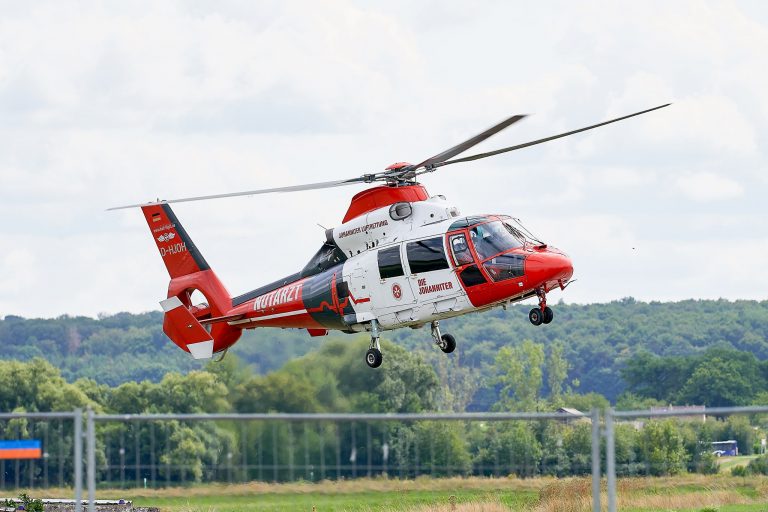
Applicants for a CPL(H) must be at least 17 years old at the start of their training and at least 18 years old to be granted a license.
A valid type rating for ROBINSON R22, R44 or R66 as well as a valid class 1 certificate of fitness to fly are required at the beginning of the training. In addition, proof of sufficient knowledge of English, mathematics and physics must be provided.
Furthermore, holders of a valid PPL(H) license must:
– At least 155 flight hours total flight experience
– Of the total flight hours mentioned, at least 50 flight hours must be PIC, of which at least 10 flight hours must be cross-country.
There are different variants of the theoretical training and is on your possibilities dependent. We recommend an individual consultation for this.
As a rule, the theoretical training takes place in a distance learning course with a face-to-face part at the airport in Reichelsheim.
We only recommend the CPL(H)+ATPL(H) theory route to start your commercial pilot career.
The CPL(H) training takes place day and night.
Further, training takes place from the start in the helicopter. Simulator training is not planned.
The practical training consists of:
A total of 30 flight hours, including:
- 20 flight hours of VFR training
- 10 flight hours Basic Instrument Training (Sim. IMC)
With optional NVFR training 5 flight hours, of which:
- At least 4 hours of flight NVFR with flight instructor Dual
- At least 1 SOLO flight hour of traffic patterns at night
HELI-FLIGHT GmbH & Co. KG focuses on realistic training, which is why SBTs (Scenario Based Trainings) are practiced.
At the beginning of their training, our flight students receive a starter package with all the important material, as well as access to the theoretical documents as an eBook (paper-print on demand).
The written exam is taken in the above-mentioned subjects at the responsible aviation authority. The practical test is carried out by an examiner appointed by the aviation authority.
The EASA CPL (H) license is valid worldwide for all EU-approved aircraft which the pilot has actively entered in his license. With an EASA CPL(H) license, commercial flights may be carried out under a so-called AOC (Air Operators Certificate) with all the necessary training and authorizations (which follow after the CPL(H) training). This includes sightseeing flights, VIP flights, photo flights as well as pipeline and line control flights. With appropriate further training also external load and flights in the mountains.
The license itself has a limited validity. Every registered helicopter type must be renewed after 12 months. Conditions for these renewals are:
- At least two flight hours per helicopter type in the last 12 months Helicopter types in the last 12 months.
- At least one flight hour examination flight with an EASA approved examinertest flight with an EASAlassenen Prüfer
If you want to carry passengers, you must also have completed three complete take-offs, approaches and landings within the last 90 days.
Of the 155 flight hours required at the beginning of the training, the following reductions can be taken into account:
- 20 flight hours in airplanes if the applicant holds a PPL(A)
- 50 flight hours for airships if the applicant holds a CPL(As)
- Has 10 hours of flight time in motorized gliders
- 20 flight hours for airships if the applicant holds a PPL(As)
- 50 flight hours for airships if the applicant holds a CPL(As)
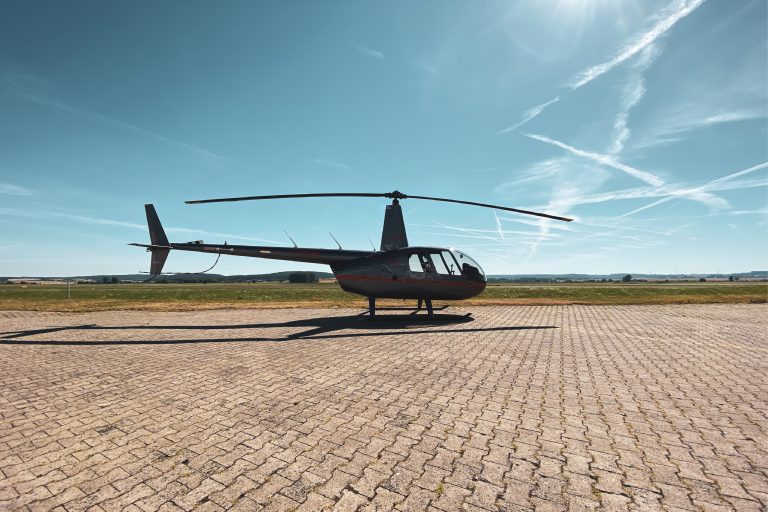
NVG Flugtraining für Europa
HELI-FLIGHT has modified its fleet of AS365 Dolphins to enhance HEMS operations under NVIS. In order to keep our fleet availability as high as expected by our customers and to keep operating costs low, we decided to modify a single Turbine Robinson R66 for NVIS Basic Flight Training.
HELI-FLIGHT offers this affordable and comprehensive night vision ground and flight training with the first modified Robinson R66 turbine helicopter in Europe, using the latest Generation III ANVIS-9 White Phosphor night vision goggles with 1600 and 1800 FOM.
Our Part-145 maintenance organization and night vision goggle repair workshop guarantees the highest availability of the helicopter and the NVIS equipment during the training period.
HELI-FLIGHT together with Aviation Specialties Unlimited, Inc. achieved an EASA STC for the Robinson R66 Turbine. We have a strong connection with ASU who provide NVIS modifications and night vision flight training around the world.
Based in EDFB / Reichelsheim near Frankfurt, we have a variety of different scenarios from flat and bright urban to dark and sparsely populated hilly areas for Night Vision Flight Training.
We use the latest Generation III ANVIS-9 White Phosphor Goggles with 1600 FOM and 1800 FOM.
The ground and flight training can also be carried out with your night vision goggles in your operational area throughout Europe.
EU(VO) 965/2012, SPA.NVIS.130, AMC1 SPA.NVIS.130(f)(1), GM1 SPA.NVIS.130(f), GM2 SPA.NVIS.130 (f), GM3 SPA. NVIS.130(f), GM1 SPA.NVIS.140 are covered by our ground and flight training. The training curriculum is approved by our national authority.
Expand your experience and hone your flying skills with a night flight under visual flight rating!
Night flight training is now part of the regular training for commercial pilots. Such an additional qualification can also be obtained from us as a private pilot for helicopters.
Requirements
The holder of a PPL(H) wishing to obtain a night flight qualification shall demonstrate at least 100 hours as a pilot on helicopters flown after obtaining the licence; this must include at least 60 hours as pilot-in-command on helicopters and 20 hours cross-country flight.
Theoretical training:
Der Lehrgang umfasst 5 Stunden theoretische Ausbildung in den folgende Themengebieten:
Practical training
The practical training comprises at least 15 flight hours, whereby the following points must be fulfilled as a minimum:
-3 hours of dual instruction of which at least one hour is overland navigation and
-5 night circuits in solo flight with one take-off and one landing per circuit
Extend your license with a rating: Type Rating Instructor (TRI) according to FCL.905.TRI TRI. As a TRI(H) you may provide training for type ratings without necessarily acquiring a full flight instructor rating (FI) in advance.
Requirements
for a TRI(H) certificate SP MEH at least 500 hours;
- of which at least 100 hours as PIC on SP MEH
Ausbildung:
The TRI(H) training SEH, MEH, MP MEH includes at least:
25 hrs of teaching and learning (Holders of an FI(H) rating will have these 25 hrs waived.)
10 hours of professional training including verification of professional knowledge, creation of
lesson plans and classroom/simulator training skills development
5 Std. SP oder 10 Std. MP Flugunterricht auf dem entsprechenden Luftfahrzeug oder Simulator
At the end of the training course, there is an assessment of competence according to FCL.935.TRI.
Rights of the TRI
The privileges of a TRI include training for: Ausbildung für:
Restricted Rights
If the TRI training is conducted only in a simulator, the rights of the TRI are limited to training in the simulator.
The privileges of a TRI(H) are limited to the template in which the assessment of the
Competence for issuing the TRI certificate has been filed. The privileges of the TRI(H) are extended to additional designs if:
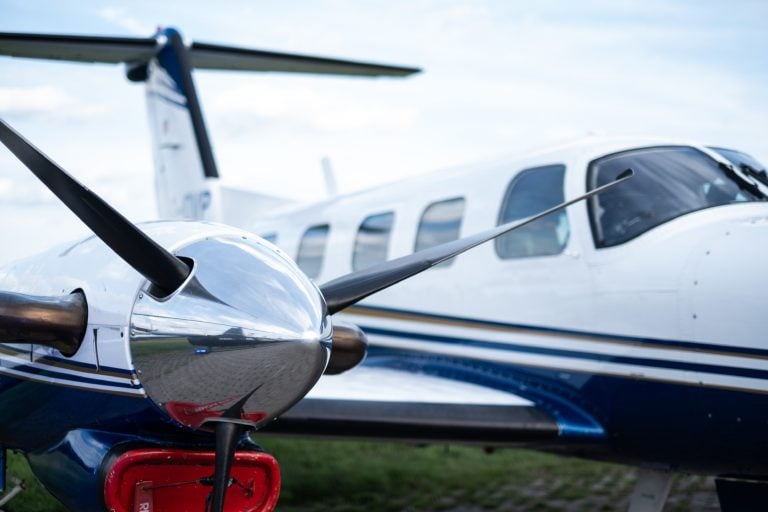
Requirements
A valid EASA license LAPL(A) / PPL(A), CPL(A), ATPL(A) and a valid flight medical certificate.
Theoretical training
We provide all necessary knowledge in-house.
Systems, operational limits, flight performance, loading and center of gravity, emergency and operational procedures.
The theory test is taken by the examiner on the day of the practical test before the certification flight.
Practical training
At least 3 hours of flight training with at least 10 take-offs and landings with a flight instructor and 10 take-offs and landings under the supervision of the flight instructor are required for holders of the LAPL(A)
Even license holders of a PPL(A), CPL(A) or ATPL(A) should consider this a “minimum requirement”.
The practical certification flight with an oral test follows.
Privileges
With the SEP (land) class rating, holders of the LAPL(A) are entitled to fly single-engine land aircraft up to a maximum take-off weight of 2000kg as a PIC. Up to 3 passengers may be carried.
For holders of a PPL(A), CPL(A) or ATPL(A), the maximum take-off weight of 2000kg and the limitation to a maximum of 3 passengers are not applicable.
Deadlines or requirements for the renewal of the SEP license
Holders of a LAPL(A) may only exercise the rights associated with their license if, as an aircraft or TMG pilot, you have met one of the following conditions in the last 2 years:
12 hours of flight as a PIC, or with, or under the supervision of a flight instructor,
12 take-offs and landings,
Refresher training of at least one hour total flight time with a flight instructor.
Or they have passed a LAPL(A) proficiency check with an examiner.
Owner PPL(A), CPL(A), ATPL(A)
For the extension of the class rating license for single-engine piston aircraft SEP (valid for 2 years) with one pilot, the following requirements must be met within the last 12 months before the license expiry date: 12 flight hours of which at least 6 hours as the pilot in command (PIC) on SEP and/or TMG Proof of 12 take-offs and landings and carry out refresher training of at least one hour of flight time accompanied by a flight instructor or take a proficiency check with an examiner within the last 3 months before the license expiry.
The refresher training is waived for applicants who have passed a proficiency check for a class or type rating, a practical test or a competence assessment in another aircraft class or type.
Requirements
Applicants who are applying for a class rating for a multi-engine aircraft with one pilot for the first time must have completed at least 70 hours as a pilot in command on aircraft.
Also:
A valid EASA Class 2 Medical
A valid EASA Part-FCL PPL(A), CPL(A) or ATPL(A) license
Theoretical training
The theory course for a class rating for multi-engine aircraft with one pilot comprises at least 7 hours of theory lessons and takes place in Reichelsheim. The focus is on the systems of the aircraft, the general restrictions, calculations of various weights and centers of gravity, the performance data and emergency procedures, ...
Finally the theoretical knowledge is examined, which we do in-house.
Practical training
The flight training comprises at least 6 hours of flight training with a flight instructor, of which 2.5 hours under normal conditions and 3.5 hours in engine failure procedures and asymmetrical flight techniques.
The practical test can take place on our aircraft. It must be submitted within 6 months of the start of the class rating course and within a period of 6 months prior to the application for class rating.
Privileges
With the MEP class rating, you are entitled to fly the relevant type, according to visual flight rules.
The license to fly the Cessna 414 by instruments requires at least 5 additional hours of flight training, provided that an instrument flight license for multi-engine aircraft has not yet been acquired.
Deadlines and requirements for the extension of the MEP license
The MEP class rating is valid for 1 year.
To extend the MEP class rating, the applicant must:
10 route sectors as a pilot of the relevant aircraft class and one route section as a pilot of the relevant aircraft class (or FSTD) flown with an examiner. This sector of the route can be flown during the proficiency check.
The extension of a BIR or IR(A), if available, can be combined with a proficiency test for the extension of a class or type rating.
NVFR – night flight license
Requirements
A valid Part-FCL license with a registered SEP or TMG.
LAPL(A) holder: Before starting night flight training, LAPL(A) holders must have completed the basic instrument flight training required for the issuance of the PPL(A).
Theoretical training
Theoretical training takes place with us in Reichelsheim.
(no distance learning, no theory exam required)
Practical training
At least 5 hours of flight training at night.
Of which at least 3 hours with a flight instructor, of which at least one hour cross country navigation with at least one cross country flight of at least 50km (27 Nm) and
5 solo take-offs and 5 solo landings to a complete standstill.
The training must be completed within six months.
If applicants hold both a SEP(land) class rating and a TMG class rating, they may qualify for either class.
After all requirements have been met, the night flight license can be registered, there is no exam.
Privileges
With the PPL/LAPL(A) license extended to include the night flight license, together with the rights granted you can practically fly 24 hours a day under VFR.
The night flight license is partially counted towards the training for IR (A) and CPL(A).
Requirements
A valid LAPL / PPL(A), CPL(A), ATPL(A) license with a registered SEP and a valid flight medical.
Theoretical training
Theoretical training is not planned, but some topics regarding the use of tail-wheel aircraft must be provided. This happens at the beginning and during the variation training.
Practical training
There are no minimum hours, but you and we should both be convinced that you are safe in dealing with tuition. Plan 3-5 hours.
With the completion of the variation training you will receive the confirmation for flying tail-wheel aircraft.
An exam does not take place.
There are practically no deadlines or requirements for the extension of the variation training. The entry remains valid as long as you keep your SEP license valid.
Privileges
After completing the difference training, you are entitled to fly tail wheel aircraft (tail dragger).
